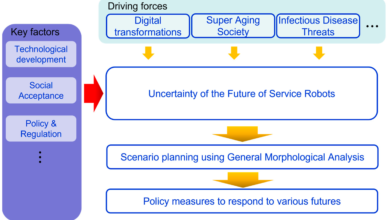Zero Trust and Threat Intelligence: Leveraging Data to Enhance Security

How can businesses better protect themselves from evolving cyber threats? What role does data play in strengthening security measures? As cyberattacks become increasingly sophisticated, businesses must adopt robust security strategies. This article explores how combining Zero Trust with threat intelligence can enhance a company’s defense against cyberattacks.
Implementing Zero Trust with Threat Intelligence
Integrating threat intelligence into a Zero Trust security framework involves using real-time data to inform security policies and actions. This can include updating access controls based on the latest information, monitoring user behavior for signs of compromise, and automating responses to detected threats. By incorporating this process, businesses can ensure that their Zero Trust policies are not static but evolve in response to the latest threats.
Choosing the Right Tools and Platforms
Selecting the right tools and platforms is crucial for implementing Zero Trust security with threat intelligence. Businesses should look for solutions that integrate threat intelligence feeds and Zero Trust policies seamlessly. These tools should also support automation, allowing for real-time updates and responses. The right technology will enable businesses to manage and leverage data to strengthen their security posture efficiently.
Training and Awareness
For the process to be effective, employees need to be aware of their role in maintaining security. Training programs should educate staff on recognizing threats, understanding the importance of strict access controls, and following best practices. An informed workforce is a critical component of a successful Zero Trust strategy.
Benefits of Combining Zero Trust and Threat Intelligence
Proactive Threat Mitigation
By combining these two, businesses can adopt a proactive approach to security. Instead of reacting to breaches after they occur, these combined strategies allow for the identification and neutralization of threats before they can cause damage. This proactive stance significantly reduces the risk of data breaches and other cyberattacks.
Improved Decision-Making
Threat intelligence provides valuable context that enhances decision-making within a Zero Trust framework. By leveraging real-time data, businesses can make more informed decisions about access, resource allocation, and threat response. This leads to a more agile and responsive security environment capable of adapting to new challenges.
Enhanced Security Posture
The integration of Zero Trust security with threat intelligence strengthens a business’s overall security posture. Continuous verification and up-to-date cyber attack information create a multi-layered defense that is difficult for attackers to penetrate. This comprehensive approach ensures that companies are better protected against known and emerging cyberattacks.
Read also How a Sacramento Car Accident Lawyer Can Maximize Your Compensation
Challenges and Considerations
Managing Data Overload
One of the challenges of implementing threat intelligence is managing the sheer volume of data. Businesses must ensure they have the right tools and processes to filter and analyze relevant data efficiently. Overcoming this challenge is crucial for making threat intelligence actionable within a Zero Trust framework.
Balancing Security with Usability
While they enhance security, they can also introduce complexity. To avoid disrupting business operations, it is essential to balance robust security measures with usability. Businesses should strive to implement secure and user-friendly solutions, ensuring that security does not hinder productivity.
Combining Zero Trust security with threat intelligence offers businesses a powerful way to enhance their cybersecurity defenses. Implementing these strategies requires careful planning, the right tools, and ongoing employee education. As cyberattacks continue to evolve, adopting a proactive and informed approach to security will be essential for safeguarding your business in the digital age.





